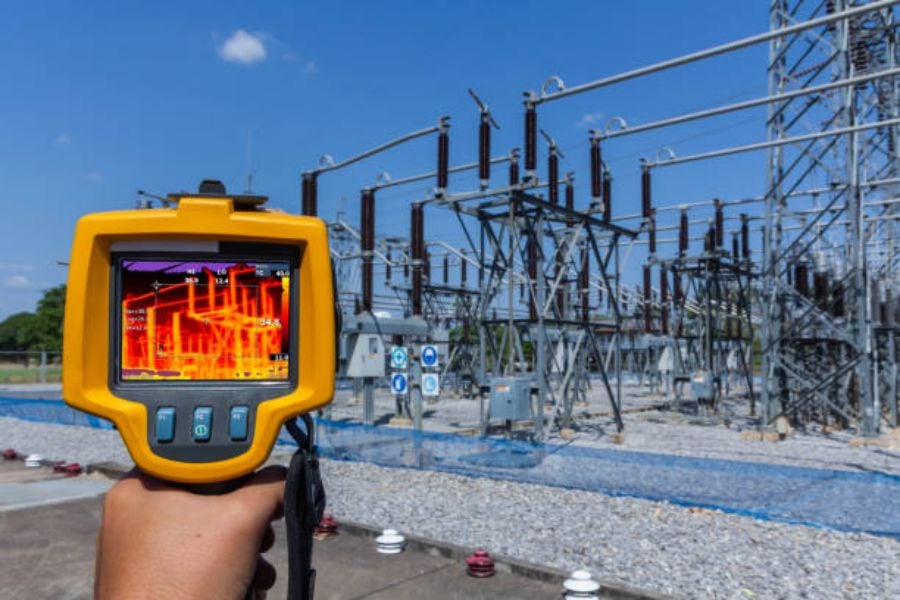The Importance of a high voltage detector tester
A high voltage detector tester is an essential tool for anyone working with electrical equipment. It is a device that is used to detect and measure the presence of high voltage in a circuit or equipment. This tool is important for the safety of the worker because it can prevent electrical shock or electrocution. It is also useful in identifying electrical faults that can cause equipment malfunctions or damages. In this article, we will provide a comprehensive guide to help you understand the importance, features, and applications of a high voltage detector tester.
Types of High Voltage Detector Tester
There are different types of high voltage detector testers available in the market. The most common types are the non-contact type and the contact type. The non-contact type is a convenient tool that works by detecting the electric field emitted by the conductor. It does not require any physical contact with the conductor, making it safer and more convenient to use. The contact type, on the other hand, requires physical contact with the conductor to detect the voltage. It is more accurate than the non-contact type but may not be suitable for all types of equipment.
Features of a High Voltage Detector Tester
A high voltage detector tester usually comes with several features that make it more efficient and convenient. Some of the most common features include a visual and audible indicator to notify the user of the voltage level, adjustable sensitivity to detect the voltage accurately, a bright LED flashlight to illuminate the work area, and a rugged design to withstand harsh conditions and frequent use. Some advanced models may also have additional features such as data logging, wireless connectivity, and compatibility with other testing equipment.
Applications of a High Voltage Detector Tester
A high voltage detector tester is useful in various applications that involve electrical equipment. It is commonly used by electricians, technicians, and engineers in the power generation, transmission, and distribution industries. It is also useful in testing electrical equipment in hospitals, factories, and other industrial settings. It can be used to test transformers, generators, switchgear, cables, motors, and other high voltage equipment.
Safety Precautions When Using a High Voltage Detector Tester
Although a high voltage detector tester is a useful tool, it can also be dangerous if not used properly. It is essential to follow safety precautions when using this tool. Some of the safety precautions include turning off the equipment before testing, ensuring that the tester is properly grounded, wearing protective gear such as gloves and safety glasses, and keeping a safe distance from the conductor. Proper training and understanding of the tool's features are also crucial in ensuring safety.
How to Choose the Right High Voltage Detector Tester
Choosing the right high voltage detector tester depends on various factors such as application, budget, and user preference. The following are some of the factors to consider when choosing a high voltage detector tester:
- Type of equipment to be tested
- Contact or non-contact type
- Accuracy and sensitivity
- Range of voltage detection
- Additional features such as data logging and wireless connectivity
- Budget
- Brand reputation and customer reviews
How to Use a High Voltage Detector Tester
Using a high voltage detector tester requires proper training and understanding of the tool's features. The following are some general steps on how to use a high voltage detector tester:
- Turn off the equipment and ensure that it is properly grounded.
- Select the appropriate type of tester and adjust the sensitivity if necessary.
- Hold the tester near the conductor, following the manufacturer's instructions.
- Observe the visual and audible indicators to determine the presence and level of voltage.
- Take necessary precautions, such as wearing protective gear and maintaining a safe distance from the conductor.
Maintenance and Calibration of a High Voltage Detector Tester
Regular maintenance and calibration of a high voltage detector tester are important to ensure accuracy and reliability. The following are some general tips on how to maintain and calibrate a high voltage detector tester:
- Regularly clean and inspect the tester for damages or signs of wear and tear.
- Replace batteries as needed and store the tester in a cool, dry place.
- Calibrate the tester according to the manufacturer's instructions or industry standards.
- Keep a record of calibration and maintenance activities.
Conclusion
A high voltage detector tester is an essential tool for anyone working with electrical equipment. It is important for the safety of the worker, and it can also prevent equipment damage and malfunctions. Choosing the right type of tester and understanding how to use and maintain it properly can ensure its effectiveness and reliability. We hope this comprehensive guide has provided useful information on the importance, features, and applications of a high voltage detector tester.

